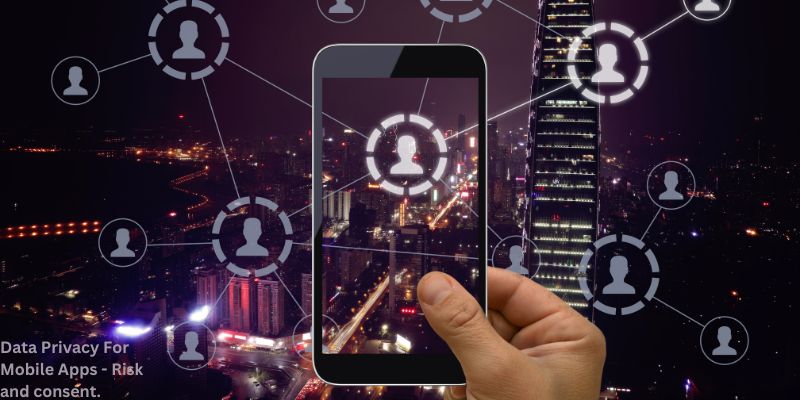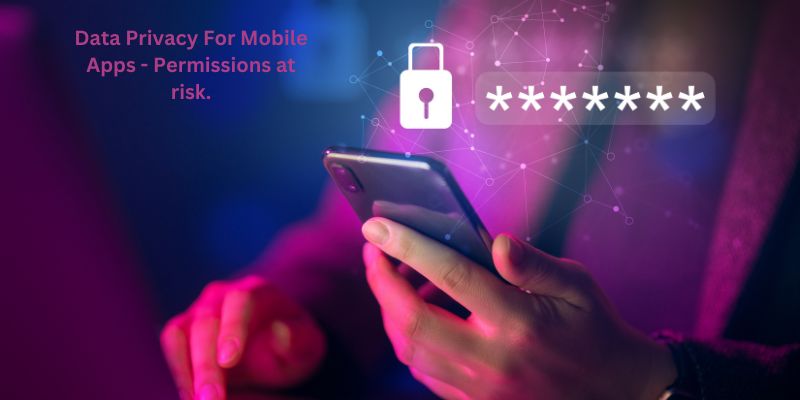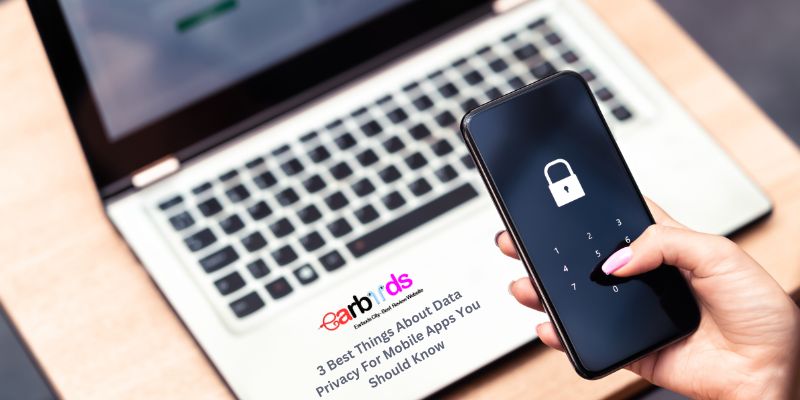Data privacy for mobile apps – An average mobile app user uses their applications for 4 hours every day. This indicates that applications may make advantage of the extensive knowledge they have about their users. There has been an increase in awareness of privacy rights, security, and compliance on a global scale. Individuals’ right to privacy is a basic one, and the GDPR makes it possible to defend those rights. In this article, with earbudscity.com, let’s find out some useful information about data privacy for mobile apps!
1. Data Privacy For Mobile Apps – Web data privacy against mobile app data privacy.

Let’s explore how data collecting differs for websites versus mobile applications before moving on. Your IP address is mostly used to collect small amounts of information when you visit websites. The other pages you’ve visited, your general location, and any information you provide privately (including any picture metadata you submit) are among these data points.
App owners, developers, and users must take into account how all of a smartphone’s inherent characteristics affect data access while creating mobile apps. The actual gadget is linked to a particular phone number, a precise location, contacts’ information, and more. There are numerous identifiable bits of information a mobile app can access by design that a webpage can’t, as long as it has a justification for using a particular feature.
2. Data Privacy For Mobile Apps – Risk and consent.

While it’s commonly known that collecting personal information about users without their knowledge is unethical and, in many circumstances, illegal, the agreements we accept when installing mobile apps nowadays cover a large portion of data gathering from app users. In addition to the data that an app requires in order to work, users willingly provide a large quantity of data with applications that may be used for ad targeting.
Particularly third-party app analytics tools are essential sources of business intelligence and may be leveraged over time to enhance the mobile experience. Because of this, gathering and analyzing user data is rather commonplace: According to a recent Oxford University research, 90% of the free applications available on the Google Play store share user data with businesses.
All things considered, it’s crucial for app developers, proprietors, and users to comprehend how this data will be gathered, used, and safeguarded from bad actors. It’s also critical that everyone understands how data is shared with other parties and has control over that process.
3. Data Privacy For Mobile Apps – Permissions at risk.

Developers and app owners are continuously deciding which functionality is “necessary” vs “unnecessary” to the running of the app because adding more features, performance, and connections often needs greater access to user information.
For instance, it makes sense for a picture-sharing software to ask permission to access a user’s camera and photo collection.
Having said that, even mandated permissions might increase the danger of data disclosure. According to a recent survey, 89% of Android applications ask for “risky permissions,” which are defined as “permissions where the app requests data or resources that involve the user’s private information, or that could potentially affect the user’s stored data or the operation of other apps.” According to a similar survey by the Washington Post, this behavior is commonplace for iOS applications as well.
The most often discovered “risky permissions” included requests to read SMS messages, access the camera, record audio, monitor a user’s position, and read call logs.
It is not always malicious to ask for access to this data. The majority of users are merely unaware of the extent to which providing these rights may result in the collection of personally identifiable information.
Network access is a prime illustration of this. The majority of consumers allow applications to access their wifi network, however many are unaware that an app may pinpoint your precise position by utilising the wifi networks nearby.
Another excellent illustration is when an app wants access to the images on a smartphone. Every photo that is taken and saved on a mobile device has unique data, including GPS, the time the shot was taken, the user’s orientation, and more. In essence, this allows applications access to a historical record of the user’s travels.
Consumers’ lack of knowledge about how using apps exposes their personal data may be both morally and practically problematic from the standpoint of data privacy. However, failure to appropriately safeguard this wealth of data on particular individuals can have disastrous effects in terms of data security.
Conclusion
Modern life is impossible without mobile applications. We use a variety of applications to check our emails, read the news, listen to music, and plan our days as soon as we get up. Smartphone applications collect and store reams of our personal data, and they have integrated themselves seamlessly into our daily lives. Therefore, you must take care of data privacy for mobile apps to protect yourself before your personal information is leaked.
I hope you found the information in this article about data privacy for mobile apps useful. Have a good day!

